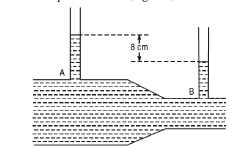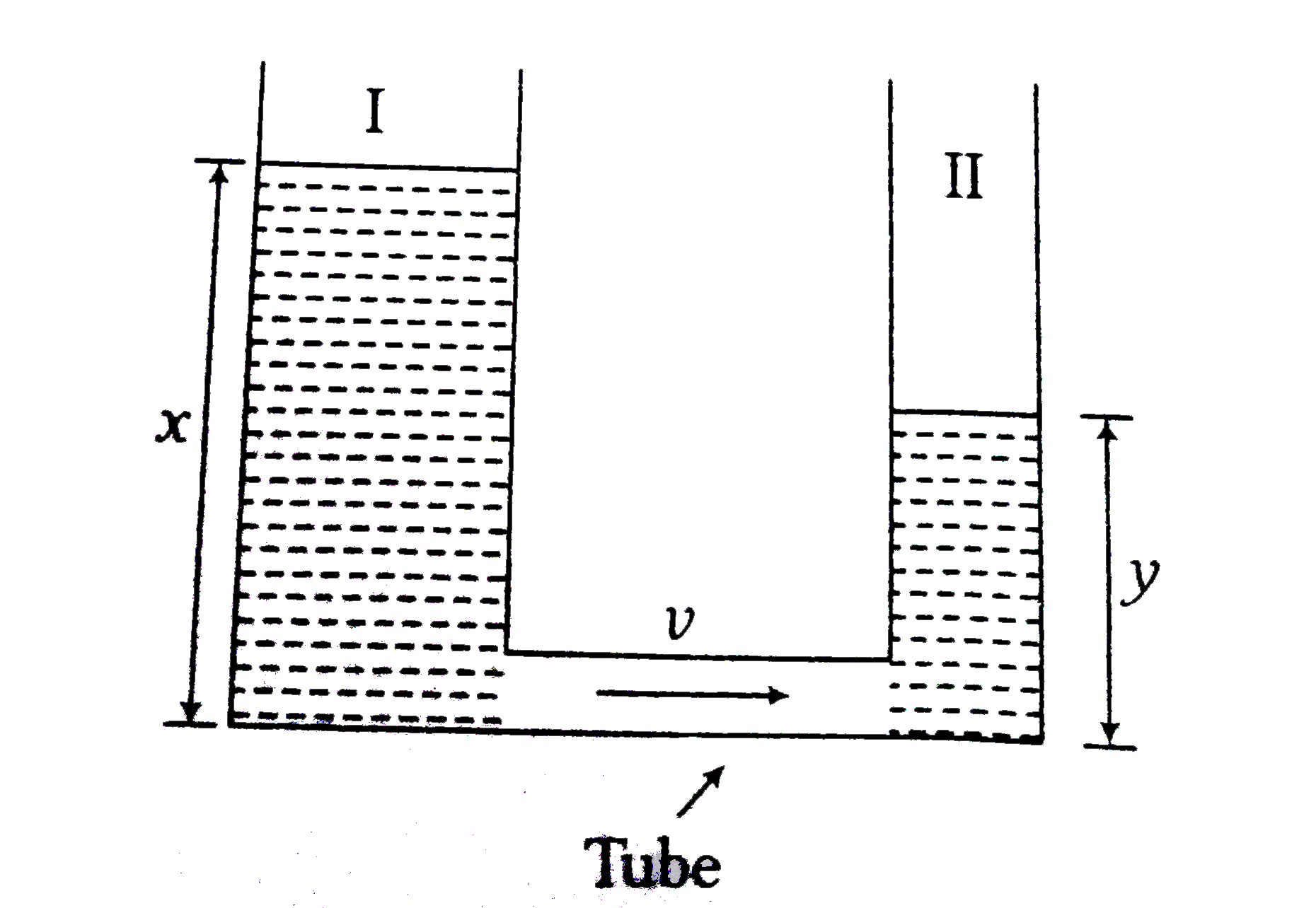A horizontal tube has different cross-sectional areas at point A and B .The diameter of A is 4 cm and that of B is 2 cm. Two manometer limbs are attached at A and B. When a liquid of density 800kgm−3 flows through the tube, the pressure difference between the limbs of the manometer is 8 cm. Calculate the rate of flow of the liquid in the tube deriving the necessary formula. ( g=9.8ms−2)
 Solution in Punjabi
Solution in Punjabi
Step by step video & image solution for A horizontal tube has different cross-sectional areas at point A and B .The diameter of A is 4 cm and that of B is 2 cm. Two manometer limbs are attached at A and B. When a liquid of density 800 kg m^(-3) flows through the tube, the pressure difference between the limbs of the manometer is 8 cm. Calculate the rate of flow of the liquid in the tube deriving the necessary formula. ( g=9.8 ms^-2) by Physics experts to help you in doubts & scoring excellent marks in Class 11 exams.
Updated on:21/07/2023Topper's Solved these Questions
Similar Questions
Distinguish between streamline and turbulent flow of a liquid.
View SolutionDiscuss stress-strain graph.
View SolutionAn elevator weighs 4000kg When the upward tension in the supporting cable is 48000 N what is the upward acceleration? Starting from rest, how far does it rise in 3 seconds ?
View SolutionThe figure shown a pipe of uniform cross-section inclined in a vertical plane. A U-tube manometer is connected between the point A and B. If the liquid of density rho_(0) flows with velocity v_(0) in the pipe. Then the reading h of the manometer is
View SolutionA liquid of density 800 kg//m^3 flowing steadily in a tube of varying cross-section. If area of cross-section at A is 4 cm^2 and at B is 2 cm^2 . If speed of liquid at A is 10 cm//s , calculate (i) the rate of flow (ii) the difference in pressures at A and B .
View SolutionThe limbs of a manometer consist of uniform capillary tubes of radii are 10−3&7.2×10−4m find out the correct pressure difference if the level of the liquid in narrower tube stands 0.2 m above that in the broader tube. (density of liquid =103kg/m3, surface tension =72×10−3N/m)
View SolutionIn a U-tube diamter of two limbs are 0.5 cm and 1 cm respectively and tube has filled with water (T=72dyne/cm) then liquid level difference between two limbs will be
View SolutionA horizontal tube has different cross-sectional areas at point A and B .The diameter of A is 4 cm and that of Bis 2 cm. Two manometer limbs are attached at A and B. When a liquid of density 8.0 g cm−3 flows through the tube, the pressure difference between the limbs of the manometer is 8 cm. Calculate the rate of flow of the liquid in the tube .
View SolutionThe difference of height between the two limbs of a manometer connected at the ends of 20 cm long tube of 1 mm radius is 28 cm If 8 cm 8cm3 of water is collected in 3 minutes ,calculate the coefficient of viscosity .
View SolutionIf cross- sectional area of limb I is A1 and that of limb II is A2 then velocity of the liquid in the tube will be, (cross- sectional area of tube is very small)

View SolutionThe diameter of a horizontal tube at points A and B are 6 cm and 3 cm, respectively. Two manometer limbs are attached at A and B. When water is allowed to flow through the tube, pressure difference of 10 cm is noted between the limbs. Calculate the rate of flow of water in the tube.
View SolutionA horizontal tube has different transverse cut area at two points A and B. The diameter of A is 4 cm. And the diameter of B is 2 cm. is. There are two manometer arms on A and B. When 0.8 g / cm .^(3) If the density fluid flows through the tube, the pressure difference between the arms of the manometer is 8 cm. is. Calculate the flow of fluid flowing in the tube. (g = 980 cm / s) .^(2))
View SolutionA liquid of density 800kg/m3 flowing steadily in a tube of varying cross-section. If area of cross-section at A is 4cm2 and at B is 2cm2, if speed of liquid at A is 10cm/s, calculate:- the rate of flow at B
View SolutionA liquid of density 800kg/m3 flowing steadily in a tube of varying cross-section. If area of cross-section at A is 4cm2 and at B is 2cm2, if speed of liquid at A is 10cm/s, calculate:- the difference in pressure at A and B.
View SolutionThe figure shown a pipe of uniform cross-section inclined in a vertical plane. A U-tube manometer is connected between the point A and B. If the liquid of density rho_(0) flows with velocity v_(0) in the pipe. Then the reading h of the manometer is
View SolutionIf cross- sectional area of limb I is A1 and that of limb II is A2 then velocity of the liquid in the tube will be, (cross- sectional area of tube is very small)

View Solution
